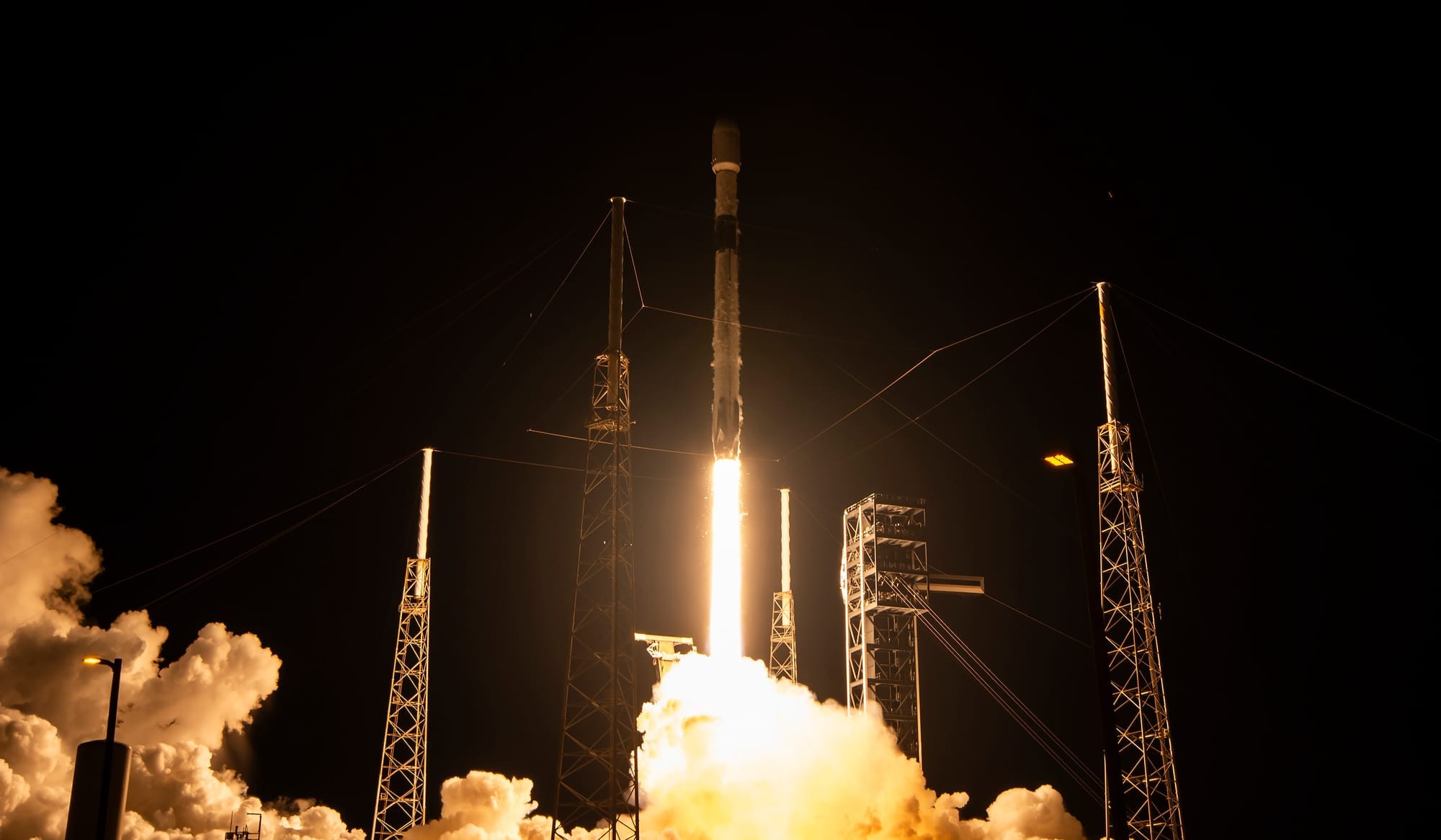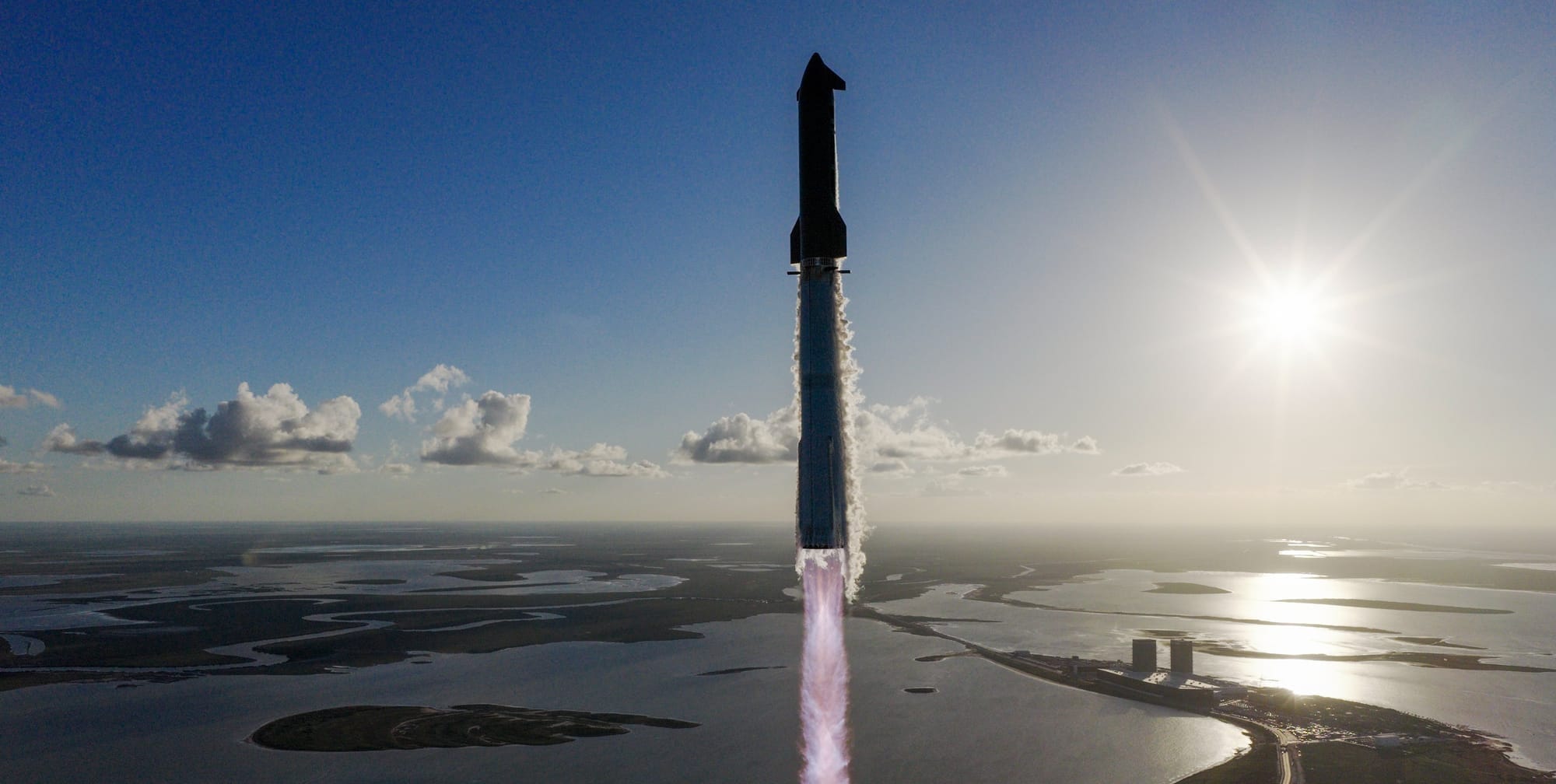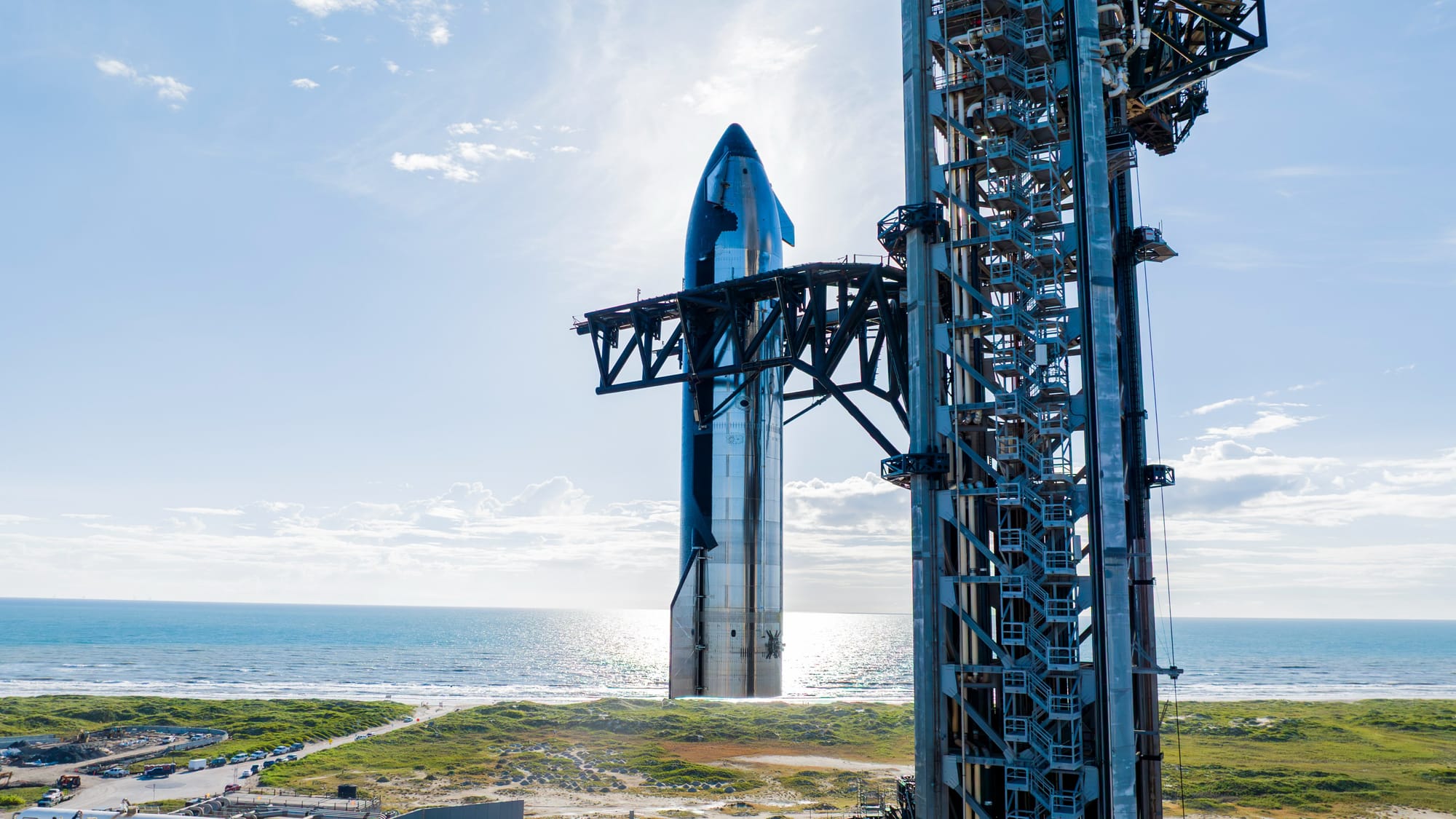Table of Contents
Yesterday, January 16th, SpaceX conducted Starship-Super Heavy's seventh flight test, beginning at 22:37 pm Universal Coordinated Time. This flight test utilized Ship 33, the first 'Block 2' Starship upper-stage, and Super Heavy Booster 14.
Like most previous test flights, Super Heavy Booster 14 lit all thirty-three of its Raptor engines, lifting off from SpaceX's Starbase launch site, near Boca Chica in south Texas.
Liftoff of Starship! pic.twitter.com/7lrFjGXzAi
— SpaceX (@SpaceX) January 16, 2025
Starship-Super Heavy lifting off from Starbase on January 16th, via SpaceX on X.
All of Booster 14's engines remained running throughout ascent with all but three shutting off for hot-staging. Ship 33 then lit its three sea-level and three vacuum engines to hot-stage for Booster 14.
Starship’s Raptor engines ignite during hot-staging separation. Super Heavy is returning to launch site for catch attempt pic.twitter.com/JaU8XJGua1
— SpaceX (@SpaceX) January 16, 2025
Ship 33 hotstaging from Booster 14, via SpaceX on X.
Following hot-staging Booster 14 relit nine of its ten engines for a boost back burn. Twelve of the Raptor engines propelled the Super Heavy booster back toward the launch site and catch tower.
Mechazilla has caught the Super Heavy booster! pic.twitter.com/aq91TloYzY
— SpaceX (@SpaceX) January 16, 2025
Booster 14 during its tower catch at Starbase, via SpaceX on X.
At almost seven minutes into flight, Booster 14 performed its landing burn, relighting thirteen engines and then shutting down all but three. With three engines running Booster 14 maneuvered between the launch towers arms, becoming the second Super Heavy booster to be caught, repeating a milestone last performed during flight five.
While Booster 14 was returning to the launch site, Ship 33 was continuing on toward space. Over several minutes Ship 33's Raptor engines gradually failed one by one and almost nine minutes into flight telemetry from the vehicle was lost.
Once telemetry was lost Ship 33 underwent a rapid unscheduled disassembly scattering thousands of pieces of debris across the Caribbean, between South Florida, Cuba, Puerto Rico, Haiti, and the Dominican Republic. Due to the debris falling at near-orbital speeds across a long area, the U.S. Federal Aviation Administration diverted numerous flights away from Starship-Super Heavy's flight path, effecting the travel of at least a few thousand people.
SpaceX had been planning to fly Ship 33 on the same flight plan as previous tests along with testing deployment of ten Starlink simulators as well as another in-space Raptor relight.
33, you'll be missed🫡
— Deven Perez (@devenperez) January 17, 2025
pic.twitter.com/ZTMQZBIR4j
Debris fragments from Ship 33 as seen from an aircraft nearby, via devenperez on X.
The seventh flight test is being considered a failure due to the Federal Aviation Administration likely needing an anomaly investigation into why the Starship upper-stage was lost and what caused it. SpaceX's Chief Executive Officer, Elon Musk, believes that the vehicle was lost due to a propellant leak and subsequent fire.
Following the test flight SpaceX shared the following on its website, emphasis added:
"The first Starship flight test of 2025 flew with ambitious goals: seeking to repeat our previous success of launching and catching the world’s most powerful launch vehicle while putting a redesigned and upgraded Starship through a rigorous set of flight demonstrations."
"It served as a reminder that development testing by definition is unpredictable.
On its seventh flight test, Starship successfully lifted off from Starbase in Texas at 4:37 p.m. CT on Thursday, January 16. At launch, all 33 Raptor engines powered the Super Heavy booster and Starship on a nominal ascent. Following a successful hot-stage separation, the booster successfully transitioned to its boostback burn, with 12 of the planned 13 Raptor engines relighting, to begin its return to the launch site."
"Super Heavy then relit all 13 planned middle ring and center Raptor engines and performed its landing burn, including the engine that did not relight for boostback burn. The landing burn slowed Super Heavy down and maneuvered itself to the launch and catch tower arms, resulting in the second successful catch of a Super Heavy booster."
"Following stage separation, the Starship upper stage successfully lit all six Raptor engines and performed its ascent burn to space. Prior to the burn’s completion, telemetry was lost with the vehicle after approximately eight and a half minutes of flight. Initial data indicates a fire developed in the aft section of the ship, leading to a rapid unscheduled disassembly."
"Starship flew within its designated launch corridor – as all U.S. launches do to safeguard the public both on the ground, on water and in the air. Any surviving pieces of debris would have fallen into the designated hazard area. If you believe you have identified a piece of debris, please do not attempt to handle or retrieve the debris directly. Instead, please contact your local authorities or the SpaceX Debris Hotline at 1-866-623-0234 or at recovery@spacex.com."
"As always, success comes from what we learn, and this flight test will help us improve Starship’s reliability as SpaceX seeks to make life multiplanetary. Data review is already underway as we seek out root cause. We will conduct a thorough investigation, in coordination with the FAA, and implement corrective actions to make improvements on future Starship flight tests."
"The ship and booster for Starship’s eighth flight test are built and going through prelaunch testing and preparing to fly as we continue a rapid iterative development process to build a fully and rapidly reusable space transportation system."
SpaceX had been planning to conduct Starship-Super Heavy's first mission into orbit in the coming months as well as a Ship-to-Ship propellant transfer demonstration. Both of these missions are critical milestones for NASA's Artemis III mission, which is planned to be the first Crewed mission to the Lunar surface since 1972.
Vehicles for the next test flight, Ship 34 and Booster 15, are currently undergoing hardware installation and testing at SpaceX's Starbase facility. Elon Musk believes both vehicles can fly in a few weeks, but in reality it may be a few months before Starship-Super Heavy flies again.
How does it compare to flight six?
On the last flight, Booster 13 ignited all thirty-three Raptor engines, propelling the vehicle toward space. All engines ran until 'most engines cut-off,' at which point Ship 31 lit its six engines for hot staging. Booster 13 then performed a boost back burn, but was unable to meet safety conditions for a return and splashed down safely in the Gulf of Mexico.
Meanwhile, Ship 31 flew on a suborbital trajectory ahead of reentry over the Indian Ocean. During coast, SpaceX completed the first in-space Raptor relight, an important step in orbital flight preparations. Following a forty-minute coast, Ship 31 began reentry, suffering some damage where some heatshield tiles were missing but avoiding structural failure of its control surfaces.
Ship 31 appeared in daylight over the Indian Ocean and headed down at sub-sonic speeds in a nose-down position. Under a kilometer above the surface, Ship 31's three Raptor engines ignited for the 'flip-and-burn' maneuver, allowing for a soft splashdown and completing the sixth flight test.
Splashdown confirmed! Congratulations to the entire SpaceX team on an exciting sixth flight test of Starship! pic.twitter.com/bf98Va9qmL
— SpaceX (@SpaceX) November 19, 2024
Ship 31 splashing down in the Indian Ocean, via SpaceX on X.
During the flight, a banana was also onboard Ship 31 throughout the test, attached to the Starlink satellite deployment mechanism and doubling as a microgravity indicator.
What is Starship-Super Heavy?
Starship-Super Heavy is SpaceX's in-development fully reusable super heavy-lift launch vehicle and the largest rocket currently flying. SpaceX is currently aiming to have the launch vehicle deliver one-hundred and fifty tons to low Earth orbit while reused or two-hundred and fifty tons when expended, although there are rumors from SpaceX of an expendable payload capacity of three-hundred tons.
On the launch pad, Starship-Super Heavy is one-hundred and twenty-four meters tall and weighs over 5,000,000 kilograms fully fuelled. The diameter of both vehicles is nine meters, excluding aerodynamic control surfaces.
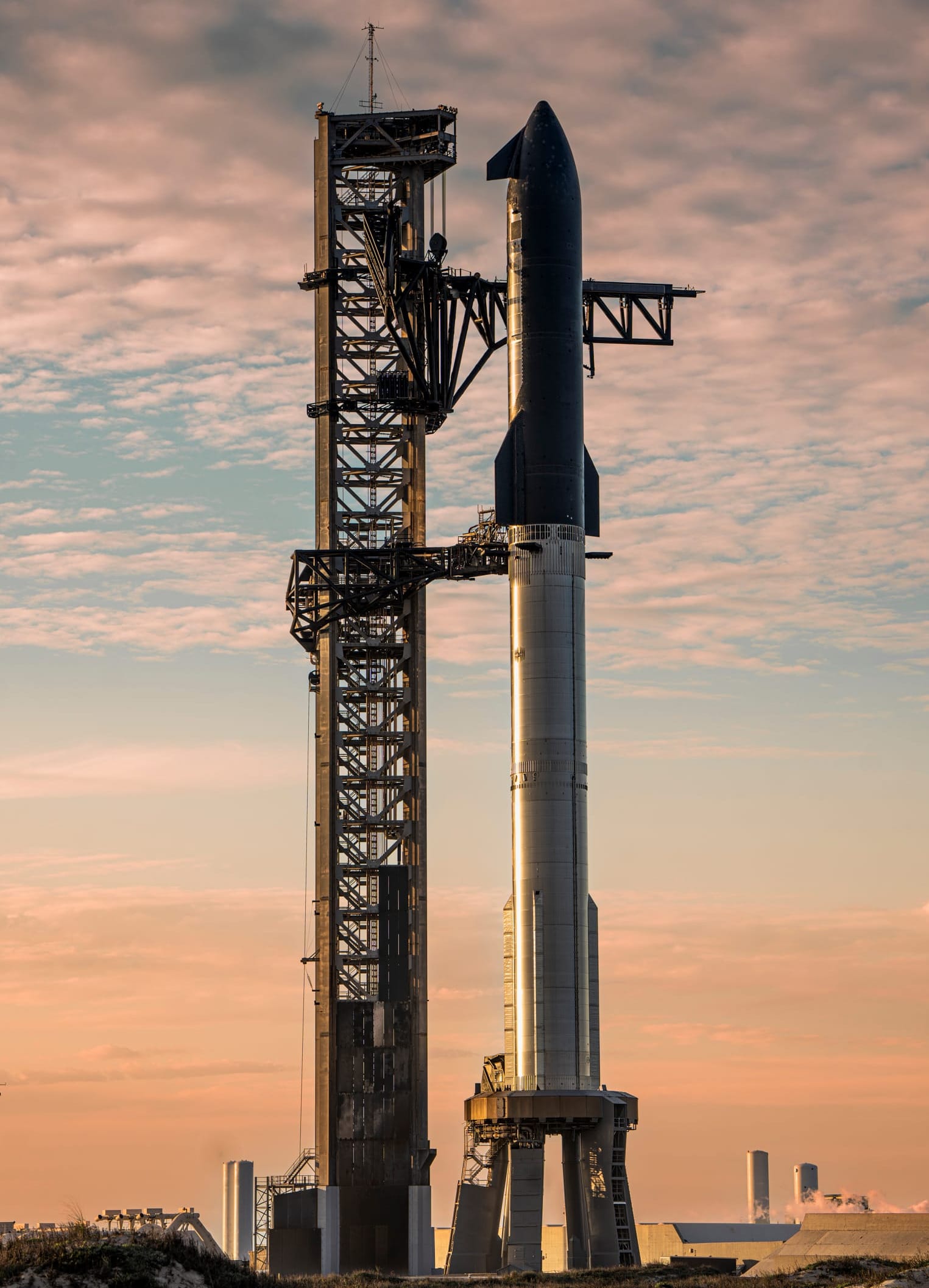
What is Starship?
Starship is the second-stage of the Starship-Super Heavy launch vehicle and is planned to be capable of multiple missions into orbit, after a short refurbishment. The vehicle is fifty two meters tall and nine meters in diameter, excluding its four aerodynamic control surfaces. Fully fuelled with liquid methane and liquid oyxgen Starship is believed to weigh approximately 1,600,000 kilograms with an approximate weight of 100,000 kilograms unfuelled.
The Starship second-stage is powered by three sea-level Raptor engines along with three vacuum-optimized Raptor engines. These sea-level engines are believed to generate 230 tons of thrust each with the vacuum-optimized engines generating 258 tons of thrust each for a total combined 1,500 tons of thrust for Starship. The vacuum-optimized Raptors are unable to gimbal requiring the sea-level Raptors for control of the second-stage on ascent and landing.
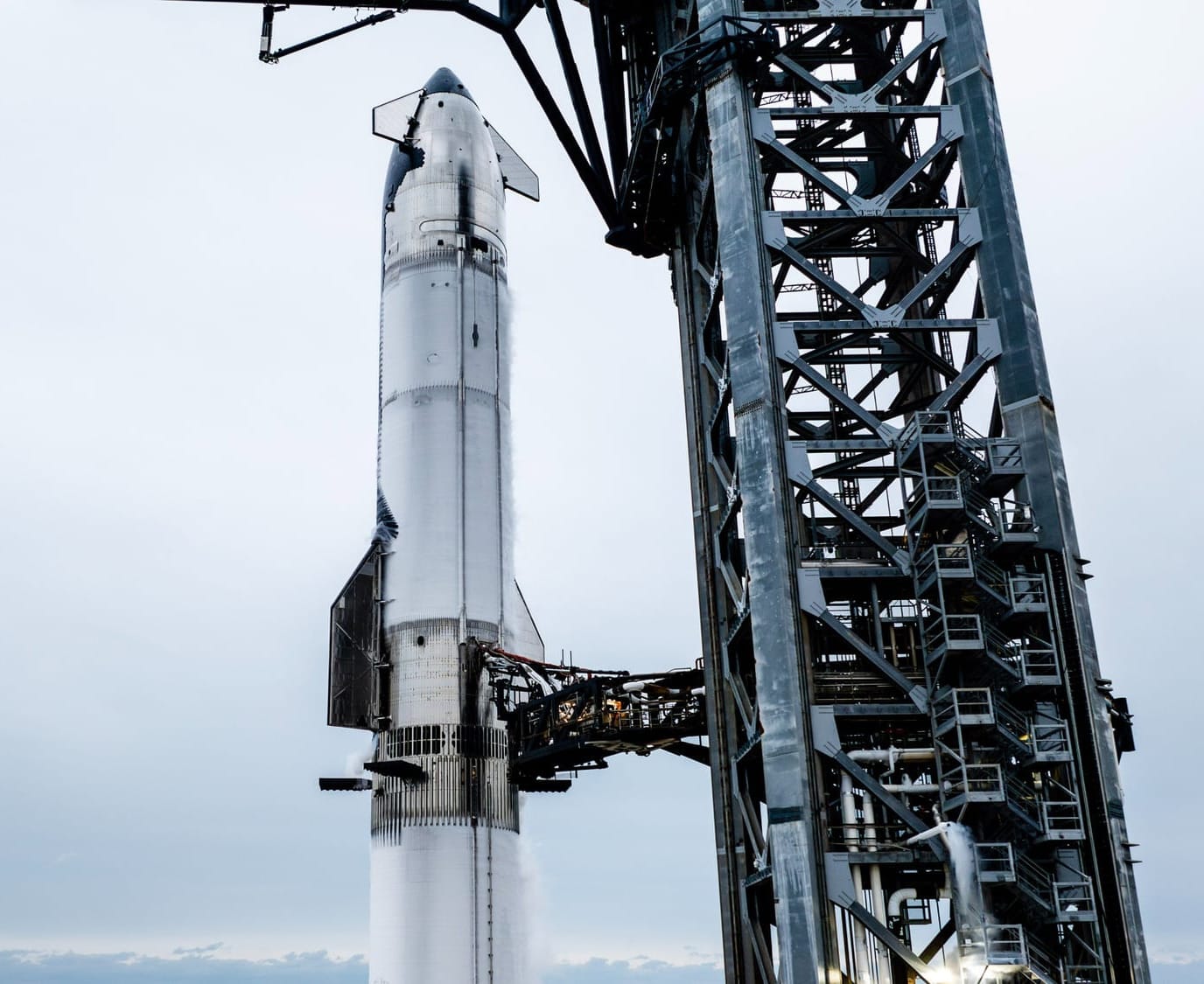
In order to survive re-entry for reuse, Starship has several thousand thermal protection tiles on one side of the vehicle and on all four of its aerodynamic control surfaces. The four control surfaces help guide the vehicle during re-entry and prior to landing inside the atmosphere at a pre-determined location. Starship also has a series of small thrusters to control the vehicle in space before re-entry.
SpaceX is believed to be working on a few variants of Starship for use as a Moon lander, propellant tanker, space station, Mars lander, and as a crewed spacecraft.
What is Super Heavy?
Super Heavy, also called 'the Super Heavy booster', is the first-stage of SpaceX's Starship-Super Heavy launch vehicle. The giant Super Heavy first-stage is planned to be capable of multiple flights per day with minimal refurbishments and inspections. The vehicle is seventy-one meters tall and nine meters in diameter, excluding its four grid fins and chines. Fully fuelled with liquid methane and liquid oyxgen Super Heavy is believed to weigh 3,600,000 kilograms with an approximate mass of 200,000 kilograms unfuelled.
The Super Heavy first-stage is powered by thirty-three sea-level Raptor engines generating a combined thrust of 7,590 tons, with each engine generating 230 tons of thrust. The outer twenty Raptor engines are unable to gimbal with the inner thirteen being able to for control of the first-stage.

To enable the reuse of Super Heavy, the vehicle has four large grid fins placed in the interstage to assist in guiding and controlling during descent. Super Heavy also has four chines running along the lower third of it to generate lift and assist in stabilization.
Shortly after completing the ascent, Super Heavy relights ten engines, as three were running during staging, and performs a 'boost back' burn in order to return to the launch site. After the 'boost back' burn is completed the engines shut down with Super Heavy being guided by a series of small thrusters and its grid fins. Once Super Heavy is at the correct altitude above its landing location three engines start back up for the landing burn. SpaceX currently plans to have Super Heavy land in the ocean with launch site landing attempts happening with later flights.
Super Heavy also features a hot-staging ring atop of it to allow for a faster and simpler staging process, according to SpaceX. The hot-staging ring has dozens of gaps on the sides to allow for the Raptor engine exhaust of Starship to escape.



